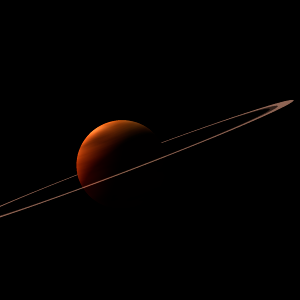|
|
Space Astro
|
Info for exoplanet "Elon"
| Scientific (actual) data |
|---|
| Name | RX J1832-33 b |
| Planet status | Confirmed |
| Planet mass | 26 |
| Orbital period | 0.089583 |
| Semi major axis | 0.0044 |
| Discovered | 2001 |
| Updated | 2024-06-30 |
| Publication | Published in a refereed paper |
| Detection type | Imaging |
| Mass measurement type | Spectrum |
| Alternate names | XB 1832-330 b |
| Star name | RX J1832-33 |
| Right ascension | 278.93° |
| Declination | -32.99° |
| Mag v | 18.9 |
| Star distance | 9600 |
| Star mass | 1.4 |
| Star sp type | PSR |
| Star alternate names | XB 1832-330 |
| Wikipedia article | RX J1832-33 b |
Back
| |
| Fictional info (?) |
|---|
| Suggested name | Elon |
| Planet type | Huge cold gas giant |
| The hydrogen peroxide has probably photodissociated, and the free nitric oxide has been swept into interplanetary space by the solar wind because of the lack of a planetary magnetic field.
The smooth Borealis basin in the northern hemisphere covers 16 percent of the planet and may be a giant impact feature. |
| Atmosphere | Nitric oxide | 73% |
| Ammonia | 14% |
| Hydrogen peroxide | 12% |
| Atmospheric pressure | 10 bar |
 |
| No known satellites |
| Google search for Elon |
|
Website by Joachim Michaelis
|
|
|
|